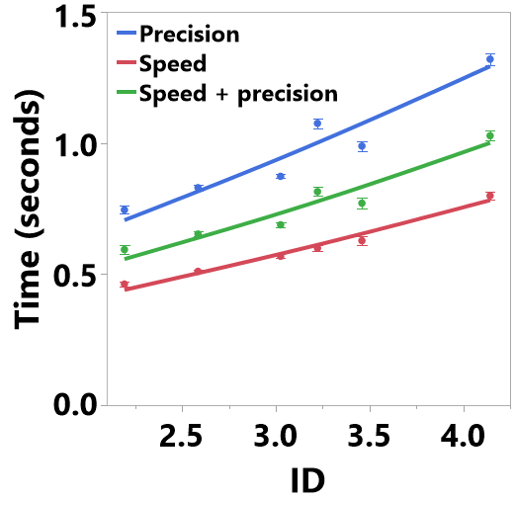
Effective Throughput Analysis of Different Task Execution Strategies for Mid-Air Fitts' Tasks in Virtual Reality Article
Anil Ufuk Batmaz, Wolfgang Stuerzlinger
Abstract:
Fitts’ law and throughput based on effective measures are two mathematical models frequently used to analyze human motor performance together with a standardized task, e.g., to compare the performance of input and output devices. Even though pointing has been deeply studied in 2D, it is not well understood how different task execution strategies affect throughput in 3D virtual environments. In this work, we examine MacKenzie’s effective throughput measure, claimed to be invariant to task execution strategies, in Virtual Reality (VR) systems with three such strategies, “as fast, as precise, and as fast and as precise as possible” for ray casting and virtual hand interaction, by re-analyzing data from a 3D pointing ISO 9241-411 study. Results show that effective throughput is not invariant for different task execution strategies in VR, which also matches a more recent 2D result. Normalized speed vs accuracy curves also did not fit the data. We suggest that practitioners, developers, and researchers who use MacKenzie’s effective throughput formulation should consider our findings when analyzing 3D user pointing performance in VR systems.
